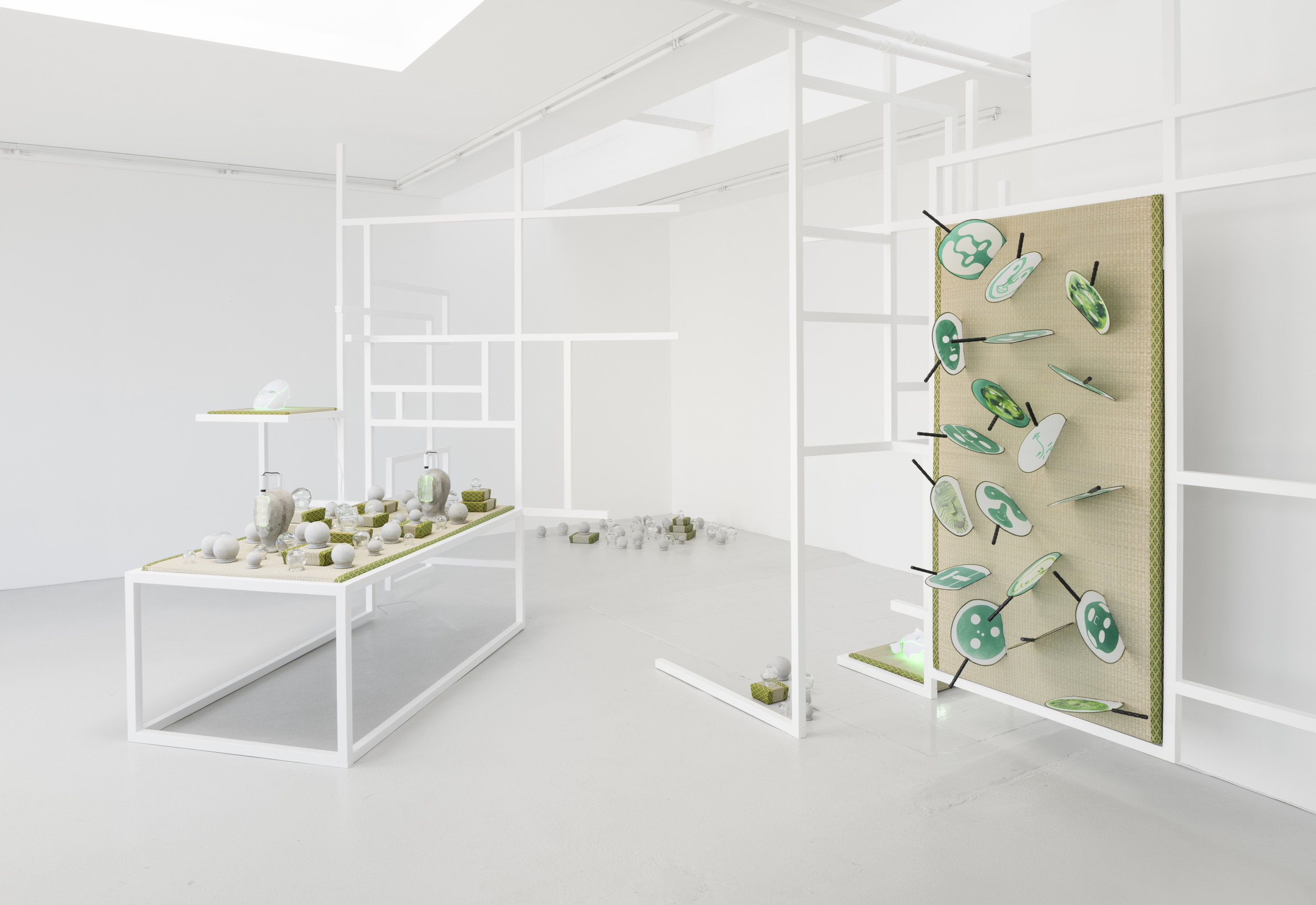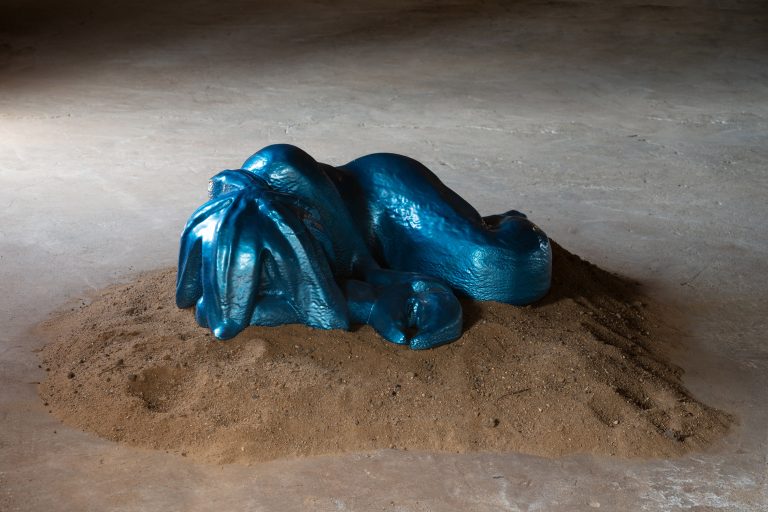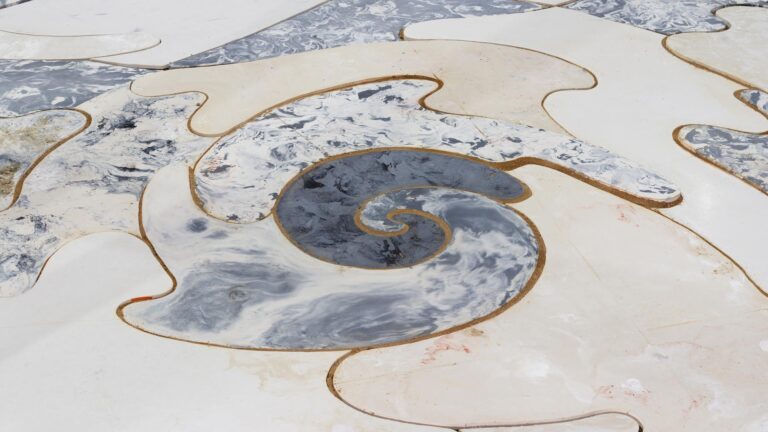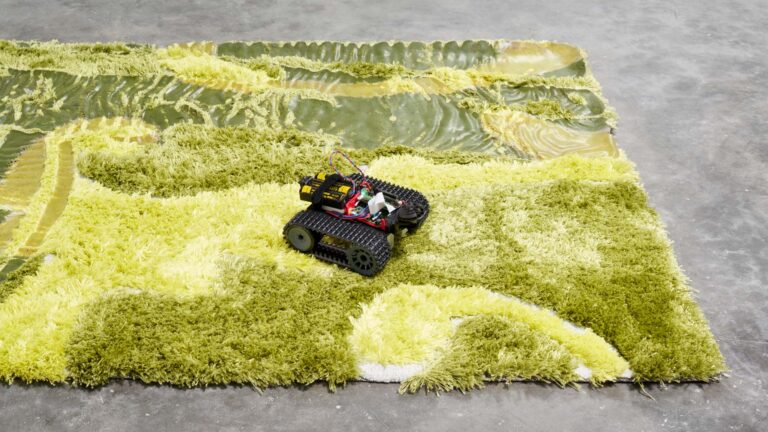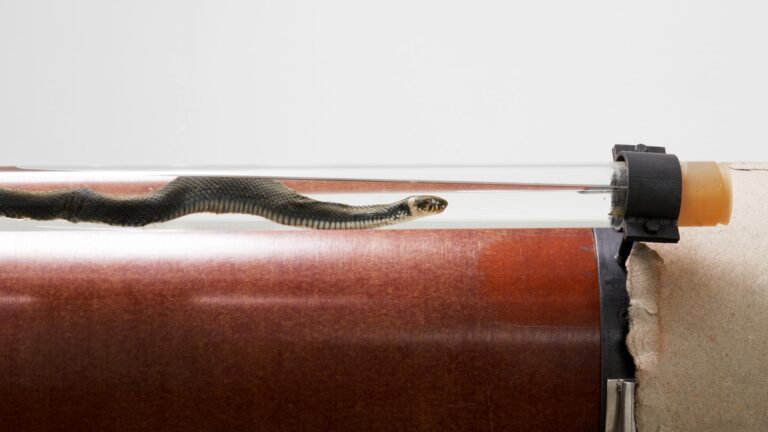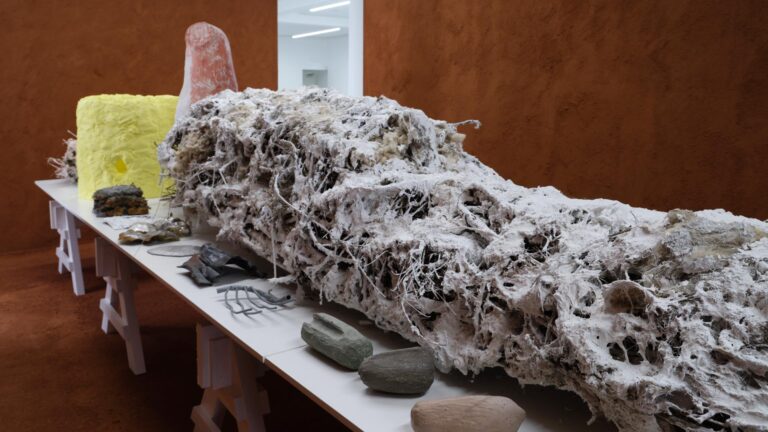Artist: Astrid Myntekær
Exhibition title: MEMES
Venue: Gether Contemporary, Copenhagen, Denmark
Date: May 24 – June 30, 2018
Photography: all images copyright and courtesy of the artist and Gether Contemporary, Copenhagen
Astrid Myntekær’s solo show MEMES is a installation made specifically for the space of Gether Con-temporary. The exhibition is structured around three three-dimensional grids mimicking a hybrid interior somewhere between a Western wellness center, an Eastern living room and a Frankensteinian cosmetics lab. The show revolves around the theme of the well-being of today’s troubled individual whose place in the world is not a given. The wooden structures serve as a skeleton, which supports the display of hu-man instruments and body parts. But the structures also serve as an environment, which welcomes and envelops the visiting public. The wooden constructions are organized around Japanese tatami mats, measuring 90×90 and 90×180 cm. In Japan, tatami mats –derived from the proportions of the human body– are used as units for floor plans. In Astrid Myntekær’s exhibition, some customized mats are however as small as 12×12 cm. It’s as if certain parts of the interior are too small for the individual; as if the welcoming interior also expels its visitors as misfits.
The title of the exhibition is MEMES. On the one hand, the title hints at an atomized society where it’s all about “me, me, me”. On the other hand, it references biologist Richard Dawkins’ Darwinian ideas of how certain forms of culture, so-called memes -be it tools, styles or entire belief systems- survive and spread. According to Dawkins, what succeeds in the fight for survival isn’t found at the level of the individual human organism. Natural selection rather plays out on a smaller, biological scale, that of the genes, or on a larger, cultural scale, that of the memes.
Astrid Myntekær’s exhibition can be said to present a meeting of memes. The show is testament to a multicultural world marked by the migration of objects, designs, ideas and belief systems. The wooden constructions are indebted to Dutch de Stijl design. The tatami mats are used in Japanese interior decorating. The ‘cupping cups’ and the acupuncture needles belong to the realm of ancient and alterna-tive medicine and the fans and masks to the traditional culture of China. The lasers are the brainchild of scientists like Albert Einstein and the American tech industry. Different local cultures have fostered all these elements, which have evolved and spread to the entire globe in forever changing formats and versions.
The interest in elements, which operate both on a smaller and a larger scale than that of the individual, is also at play in the way the artist is toying with tapping into flows of energy. The wooden structures are echoes of the branching trees – like the ones Piet Mondrian painted in ever more abstract form until he arrived at the distinct ‘de Stijl style’. They are like infrastructures or networks that transmit vital energies. They are reminiscent of the lightnings, which traverse the glass of the smart phone-like glass screens. They are reminiscent of the arteries, which direct the flow of blood in the human body. And it’s this flow, which the acupuncture needles and ‘cupping cups’ serve to redirect. And it’s these instruments that Astrid Myntekær in return redirects by withdrawing them from circulation. The disposable needles are rearranged in small pyramids, i.e. ancient Egyptian tombs. The cups, which are literally used for sucking blood via vacuum, are reused as moulds for concrete sculptures. MEMES flirts with and hacks today’s fascinating universe of healing en masse; a world, where the very promises of cosmetic treat-ment, alternative medicine and digital connectivity for broken individuals are also broken.
Astrid Myntekær lives and works in Copenhagen. She graduated from The Royal Danish Academy of Fine Arts in 2012 and Hochschule für bildende Künste, Hamburg in 2009. Astrid Myntekær have exhibited at Overgaden Institut for samtidskunst, Copenhagen, ISCP New York, Museet for Samtidskunst, Roskilde, The Jeune Creation Europeenne Biennal, Black Sesame Space, Beijing, Röda Sten Konsthall, Göteborg, Nikolaj Kunsthal, Copenhagen, New Shelter Plan, Copenhagen, Thisted Biennalen. She has recieved prizes and grants from among others Arken, Niels Wessel Bagge and Ole Haslund as well as the critic’s prize at the Jeune Creation Europeenne Biennal. Her work can amongst other places be experienced in the collection of Arken, Museum of Modern Art.




